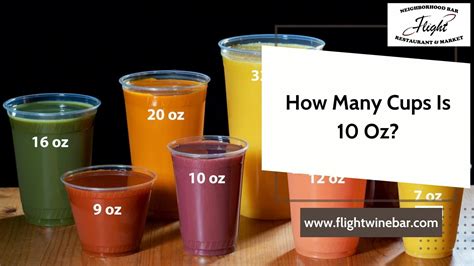How Many Cups Are In 10 Oz
Kalali
Apr 07, 2025 · 4 min read

Table of Contents
How Many Cups Are in 10 Oz? A Comprehensive Guide to Fluid Measurement Conversions
Understanding fluid measurements can be tricky, especially when dealing with conversions between ounces and cups. Many recipes, cooking instructions, and even everyday tasks require precise measurements, making the ability to accurately convert between units crucial. This comprehensive guide will delve into the intricacies of converting ounces to cups, specifically addressing the question: How many cups are in 10 oz? We’ll go beyond a simple answer, providing context, practical examples, and tips to master fluid measurement conversions.
Understanding Ounces and Cups
Before we tackle the conversion, let's define our units:
-
Fluid Ounce (fl oz): A unit of volume in the imperial and US customary systems. It's important to note that a fluid ounce is different from an ounce of weight (avoirdupois ounce). We're focusing on fluid ounces here.
-
Cup (c): A unit of volume commonly used in cooking and baking. The size of a cup can vary slightly depending on the measuring cup used, but it's generally standardized to 8 fluid ounces (fl oz).
The Simple Answer: How Many Cups Are in 10 Oz?
The straightforward answer is: There are 1.25 cups in 10 fluid ounces. This is because 1 cup is equivalent to 8 fluid ounces, and 10 fluid ounces divided by 8 fluid ounces per cup equals 1.25 cups.
Beyond the Simple Answer: Nuances and Considerations
While 1.25 cups is the generally accepted conversion, several factors can influence the accuracy of this measurement:
-
Measuring Cup Variations: Not all measuring cups are created equal. Some might be slightly larger or smaller than the standard 8-ounce cup. Slight inconsistencies in manufacturing can lead to minor discrepancies in measurements.
-
Liquid Viscosity: The viscosity (thickness) of the liquid being measured can affect the accuracy of pouring. Thick liquids, like honey or syrup, might not pour as easily or consistently as water, leading to minor variations in the measured amount.
-
Temperature: The temperature of a liquid can slightly affect its volume. Hot liquids generally occupy slightly more volume than cold liquids. While this effect is usually negligible in everyday cooking, it can become more significant in scientific applications.
Practical Applications and Examples
Let's explore some practical scenarios where understanding the conversion between ounces and cups is beneficial:
1. Baking: Imagine a recipe calling for 10 ounces of milk. Knowing that this equates to 1.25 cups allows you to easily measure the correct amount using a standard measuring cup. You could measure one and a quarter cups, or fill a one-cup measure and then half of another.
2. Cooking: Many sauces and gravies require precise measurements. If a recipe requires 10 ounces of broth, understanding the conversion allows for accurate measurement using a cup and a smaller measuring spoon for the remaining 2 ounces (1/4 cup).
3. Everyday Life: Even outside of cooking, this conversion can be useful. Perhaps you need to measure 10 ounces of juice for a child’s drink or determine the amount of liquid in a container.
Mastering Fluid Measurement Conversions: Tips and Tricks
To confidently handle fluid measurement conversions, consider these tips:
-
Invest in Accurate Measuring Tools: A high-quality set of measuring cups and spoons is a worthwhile investment for accurate and consistent measurements.
-
Practice Makes Perfect: The more you practice converting between ounces and cups (and other units), the more comfortable and proficient you will become.
-
Utilize Online Converters: Numerous online conversion calculators are readily available to assist with quick and easy conversions. These can be extremely helpful when converting between numerous different units. Remember to always double-check the results with your own calculations.
-
Understand the Relationship Between Units: Remembering that 1 cup equals 8 fluid ounces forms the basis for all other conversions. This understanding makes it easy to calculate conversions mentally, even those not as immediately obvious.
Expanding Your Knowledge: Beyond Ounces and Cups
While this guide focuses on ounces and cups, understanding other fluid measurement units is also beneficial. Familiarizing yourself with:
- Pints: 1 pint = 2 cups = 16 fluid ounces
- Quarts: 1 quart = 2 pints = 4 cups = 32 fluid ounces
- Gallons: 1 gallon = 4 quarts = 8 pints = 16 cups = 128 fluid ounces
will significantly enhance your ability to handle various measurement scenarios.
Conclusion: Precision in Measurement
Accurate measurement is crucial in various aspects of life, from cooking to scientific experiments. Understanding how many cups are in 10 ounces, and more generally, how to confidently convert between fluid measurement units, is a valuable skill that enhances precision and reliability. By mastering these conversions, you can confidently tackle any recipe or task requiring accurate fluid measurement, leading to better results and greater success. Remember to always double-check your measurements and utilize the appropriate tools for the task. With practice and the right tools, you'll become a pro at fluid measurement conversions in no time!
Latest Posts
Latest Posts
-
Lines Body Cavities And Covers The Bodys External Surface
Apr 09, 2025
-
How Many Ml Are In 12 Fl Oz
Apr 09, 2025
-
75 In Is How Many Feet
Apr 09, 2025
-
What Is 4 C In Fahrenheit
Apr 09, 2025
-
What Are Producers In An Ecosystem
Apr 09, 2025
Related Post
Thank you for visiting our website which covers about How Many Cups Are In 10 Oz . We hope the information provided has been useful to you. Feel free to contact us if you have any questions or need further assistance. See you next time and don't miss to bookmark.